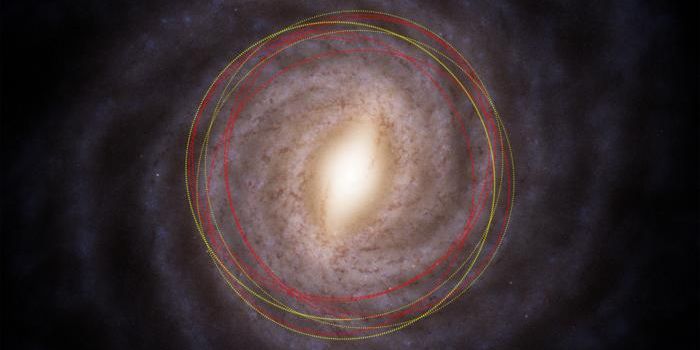You've probably heard of the Orion space capsule. It's part of the Multi-Purpose Crew Vehicle or (MPCV), NASA's next manned spacecraft. Weighing 21 tons, it will be boosted into space by a rocket and carry up to six astronauts to the International Space Station, possibly to the Moon, a nearby asteroid, or Mars.

But back in the fifties and early sixties there was a serious plan for another spacecraft called Orion. One version would have been as tall as a sixteen-story skyscraper, and in the shape of a giant bullet. It would weigh roughly 4000 tons and have a crew of up to a hundred and fifty people, each of whom would have their own private cabin. Designers of this Orion would not be concerned with weight. Their design would be intentionally massive, and tough, built like an ocean going ship, with a hull of heavy steel plate. Their Orion would blast off from the Nevada desert, or some other remote location, directly into space- and eventually accelerate to about one tenth of the speed of light.
In about three months few months it would land on Mars. Using their massive ship, stocked with all of the provisions, scientific equipment, even full laboratories required, the crew would spend a year completing an extensive study of Mars.
At the end of that year, Orion would blast off from Mars, not to return to Earth, but to head deeper into space, to Saturn, where it would orbit for a year, studying the planet's rings and moons. Then Orion would head for home. At the end of its five-year mission, this Orion would return to Earth with samples from Mars, Phobos, Deimos, Enceladus, Iapetus and Saturn's rings, all of which they would have already been studying in the Orion's extensive laboratories during the year and a half voyage home, all accomplished before 1975.
Sounds like a thrilling science fiction novel, right? Well, actually, from 1958 to 1964, American scientists undertook a very serious, very well-funded project to realize this very vision they called Project Orion. If you've never heard of it, that's because until quite recently the entire project was highly classified.
But how could such a thing even be possible? And if it was possible, why was it never constructed? Well, there was, you could say, a hitch. This massive, super-fast interplanetary starship would have been propelled by nuclear bombs. Yes, nuclear bombs. Crazy? Well, actually not at all.
You may think that when a nuclear bomb goes off, everything in its wake gets vaporized, right? Actually, scientists were surprised to discover that the tower that suspended the first ever nuclear device detonated in the Nevada desert was not turned into atoms. The tower was blown into pieces, yes, but the pieces were all flung, in tact, in some cases, many miles away. During one of the first underground nuclear tests called Operation Plumbbob, high speed photography showed the massive metal cap placed on top of the detonation pit was not destroyed or melted. It was flung far into the air, possibly into orbit.
These surprising results gave scientists an idea: what if you could design a craft that could ride the shockwave not just from one nuclear device, but from a series of them ejected out of the back of the craft? As they started doing the math, they realized that, properly engineered, a truly massive spaceship could not just ride these detonations into space and eventually accelerate to a little over one tenth the speed of light.
A team was assembled, and work began on this epic enterprise. Over time, the team worked out designs for the ship, the small nuclear bombs to propel it, the system to eject them from the rear of the craft, how to keep the pusher plate that would absorb the shockwaves from melting. They had even identified the shipyard that would build Orion and devised a number of possible methods for launching Orion into orbit without contaminating the Earth with radiation and electromagnetic pulses. But then came the Nuclear Test Ban Treaty that outlawed any further atmospheric detonation of nuclear devices. And that was pretty much it. The project was shelved. By that point NASA was already devoting all of its resources toward chemical rockets in the race to the Moon. And without the public ever knowing, a very buildable, highly capable, truly massive starship went from being very close to being a scientific mission, back into the realm of science fiction.
(Source: ArmaugPlanet.com)









